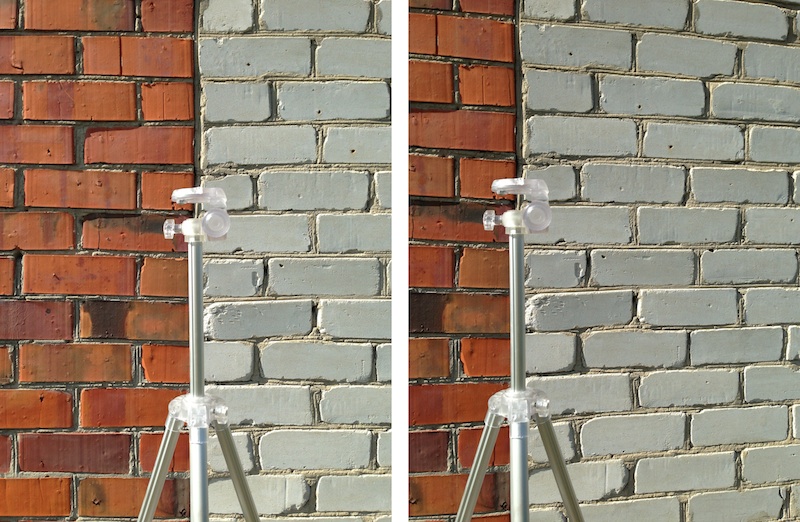

Panorama stitcher adjust for parallax software#
I find that shooting in a vertical (portrait) orientation tends to help in getting a result that's tall enough and in overshooting the corners which leads to improved image quality. The GigaPan Stitch software then uploads your panorama to to. Traditionally, photographers shoot horizontal panoramas using one or more horizontal rows with a camera shooting in a portrait orientation. Portrait Or Landscape and Multiple Rows Or Up & Down Besides the possible loss of content, this approach also helps to get the best quality possible as the center of your images tend to have better quality than the corners. So in shooting, I recommend shooting beyond the areas you want to include so you can make sure to include them after any cropping is needed. Adobe Lightroom and Bridge have a feature called boundary warp that can help to address this issue but the result can still lead to some loss of content or quality - especially near the corners. Of course, I recommend taking steps to minimize this in shooting, but it still happens. So it's really important to shoot and rotate, shoot and rotate without wasting time between each shot.Īs panoramic sequences often result in some arcing or bowing of the horizon, we often find ourselves needing to correct that distortion in post-processing. As you might imagine, the scene may change a bit from the time you shoot your first image to the last - especially when shooting 20-30 second exposures at night.

Second, level the camera itself from left-to-right so horizontal lines are horizontal. First, adjust the length of the tripod legs to level the chassis, the base of the tripod head, which is the plane of rotation as you pan the camera left to right. One common mistake that I see people make is to include some delays between some of the images in a sequence which can lead to changes in the scene. Setting up a panorama of a distant subject requires just two steps. When this problem appears, you'll most often see the problem in objects that don't appear lined up or as a straight line in places where the stitching occurs. which contains the powerfull Adjust command, which is the main stitcher. If you like to include trees and other subjects fairly close (50 feet or less) however, this may well help. With Panorama Tools there are different possible stitching methods and you can. If you're shooting far away subjects like mountains and other terrain, I don't think it's necessary. That said, this extra gear may not be necessary depending on the types of subjects you typically shoot. There are special types of panoramic heads and nodal slides that directly address this issue and they're very effective at mitigating the problem. Often times, architectural photographers will see this problem when they're shooting slanted roof lines that show a different perspective because the camera is being rotated at the camera body rather than the lens. This type of distortion (also referred to as Nodal Point Distortion) comes from shooting fairly close subjects when the camera is rotated around a point other than the nodal point of the lens.


 0 kommentar(er)
0 kommentar(er)
